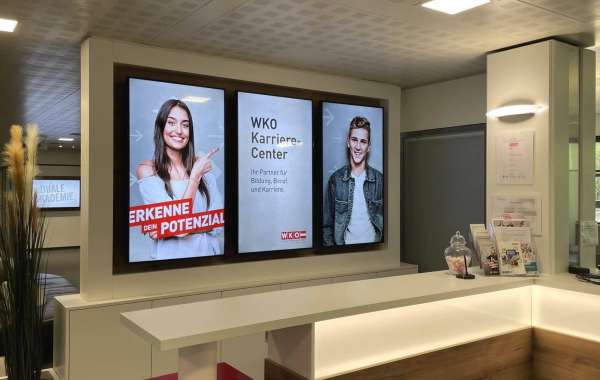In the fast-paced world of the food and beverage industry, a restaurant menu board serves as more than just a list of dishes and prices. It is a key marketing tool, a visual representation of your brand, and a vital touchpoint in the customer journey. Whether it’s a digital screen in a modern café or a chalkboard in a quaint diner, a well-designed menu board can significantly impact customer experience and revenue.
Why Restaurant Menu Boards Matter
A menu board is often the first point of interaction customers have with your offerings. In an era where time is of the essence, a clear and engaging menu board can help diners quickly make informed decisions. Research indicates that an effectively designed menu board can:
- Influence purchasing decisions: Strategic placement and design can highlight profitable or popular items.
- Enhance branding: Your menu board reflects your restaurant’s theme, style, and identity.
- Streamline service: A well-organized menu reduces customer hesitation, speeding up service during busy hours.
Types of Restaurant Menu Boards
1. Digital Menu Boards
Digital menu boards are increasingly popular due to their flexibility and dynamic features. They allow you to:
- Update menus in real-time for seasonal changes or promotions.
- Incorporate animations, videos, or live updates.
- Sync with POS systems for seamless integration.
Digital boards are ideal for fast-casual and quick-service restaurants, where efficiency and modern aesthetics are crucial.
2. Static Printed Menu Boards
Traditional printed boards are cost-effective and reliable. These include:
- Chalkboards for rustic or artisanal vibes.
- Poster-style boards for diners or family-style restaurants.
- Laminated panels for easy maintenance in high-traffic areas.
While less flexible than digital options, printed boards are perfect for establishments with consistent menus and a focus on nostalgia or simplicity.
3. Hybrid Menu Boards
Combining digital and static elements, hybrid boards offer the best of both worlds. For instance, you might use a digital screen for promotions alongside a chalkboard for daily specials.
Key Elements of an Effective Restaurant Menu Board
1. Readability and Clarity
Your digital signage software should be easy to read at a glance. Use:
- Contrasting colors for text and background.
- Legible fonts in appropriate sizes.
- Organized layouts with logical groupings (e.g., appetizers, mains, desserts).
2. Strategic Placement
Position your menu board where customers naturally look upon entering. For quick-service restaurants, place it near the order counter. For full-service restaurants, consider boards that are visible from multiple angles.
3. Highlighting Popular and Profitable Items
Use visual cues like icons, bold text, or borders to draw attention to best-sellers or high-margin items. Phrases like “chef’s recommendation” or “customer favorite” can influence choices.
4. Appealing Visuals
Include appetizing images or illustrations to evoke cravings. Ensure the photos are professionally taken and true to the actual dish to avoid disappointing customers.
5. Branding Consistency
Align the design with your restaurant’s overall branding. Fonts, colors, and graphics should match your logo, interior design, and marketing materials.
Design Tips for Restaurant Menu Boards
1. Less is More
Avoid cluttering your menu board with too many items. Highlight key dishes and guide customers to explore your full menu through staff or printed materials.
2. Leverage Negative Space
Use blank areas strategically to prevent overcrowding and draw attention to the most important details.
3. Incorporate Seasonal Themes
Refreshing your menu board to reflect seasonal dishes or themes can create excitement and encourage repeat visits.
4. Use Technology to Enhance Engagement
Interactive digital boards with touch screens can offer detailed descriptions, allergen information, or pairing suggestions.
The Role of Digitalization in Menu Boards
As technology continues to reshape the dining experience, digital menu boards are becoming a staple in the industry. They offer numerous advantages, including:
- Cost-effectiveness: While the initial investment may be higher, digital boards reduce the need for reprinting and manual updates.
- Data-driven insights: Digital systems can track customer preferences and optimize menu design accordingly.
- Eco-friendliness: By eliminating paper and plastic waste, digital boards contribute to sustainability efforts.
However, adopting digital solutions requires careful planning. Ensure your system is user-friendly, scalable, and aligned with your restaurant’s aesthetic.
Case Studies: Successful Menu Board Strategies
1. McDonald’s Dynamic Digital Boards
McDonald’s leverages digital boards to customize content based on time of day, location, and promotions. For example, breakfast items dominate the screen in the morning, while burgers and combos take center stage at lunchtime.
2. Local Café’s Chalkboard Charm
A neighborhood café uses a chalkboard to display daily specials, hand-drawn illustrations, and motivational quotes. This personal touch fosters a cozy, welcoming atmosphere.
Measuring the Success of Your Menu Board
To ensure your menu board is delivering results:
- Monitor sales data: Track changes in sales for highlighted items.
- Gather customer feedback: Ask customers if they find the menu easy to understand.
- Evaluate operational efficiency: Observe if order times decrease due to quicker decision-making.
Conclusion
A restaurant menu board is more than just a functional tool; it’s an opportunity to make a lasting impression on your customers. By investing in thoughtful design, strategic placement, and the right technology, you can transform your menu board into a powerful asset that enhances customer satisfaction and drives sales.
Whether you opt for a sleek digital display or a classic chalkboard, remember that the ultimate goal is to connect with your customers and guide them toward a delightful dining experience.




